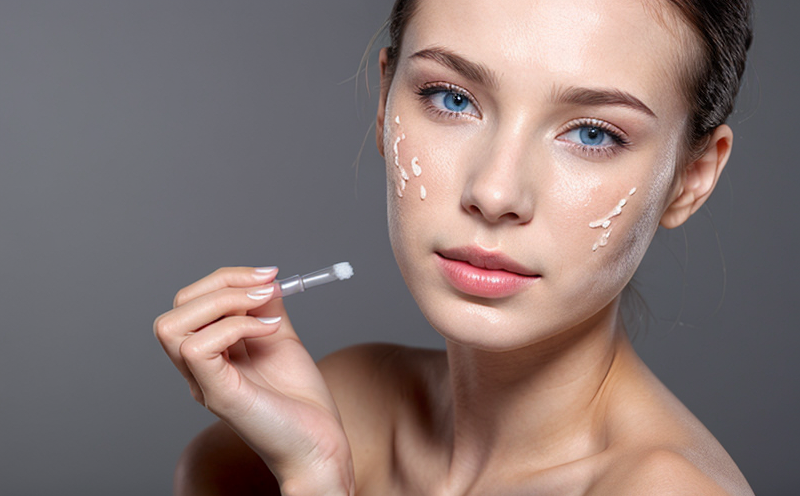Acute Dermal Irritation Testing in Cosmetics
In the realm of cosmetics testing, understanding and ensuring the safety of products is paramount. Acute dermal irritation testing plays a crucial role in this process by assessing whether a cosmetic product or ingredient can cause skin irritation upon initial contact. This form of testing is essential for both regulatory compliance and to protect consumers from potential harm.
The procedure typically involves applying a defined quantity of the test substance, such as a cosmetic formulation, onto an intact skin site of a subject animal (usually a rabbit). The application is followed by monitoring for signs of irritation over a specified period. This testing provides critical data to determine if further investigation or reformulation might be necessary.
The primary objective of this service is to identify and mitigate potential risks early in the product development lifecycle, ensuring that only safe products reach the market. By adhering to rigorous standards such as ISO 10993-10 and OECD Guidelines for Testing Chemicals, laboratories can ensure the reliability and reproducibility of test results.
For quality managers and compliance officers, this testing is a vital step in ensuring that new products meet regulatory requirements. It helps in making informed decisions about product safety and potential issues before they reach the market. For R&D engineers, it provides valuable insights into ingredient compatibility and formulation stability. Procurement teams can leverage these test results to ensure suppliers are meeting stringent quality standards.
Understanding the scope of acute dermal irritation testing requires a brief overview of its key components: specimen preparation involves ensuring the integrity of the cosmetic sample while preserving its properties for accurate testing. The application process must follow strict protocols, and the observation period is critical in capturing any adverse reactions. Reporting these findings accurately ensures that all stakeholders can make informed decisions.
The testing procedure typically follows a standardized approach. Specimens are prepared by diluting or formulating the cosmetic product as per the test protocol. The application is done using specific techniques to ensure uniformity across samples. Monitoring for signs of irritation, such as erythema and edema, begins immediately after application and continues over several hours.
The data collected during this process is crucial for determining whether the product or ingredient causes acute dermal irritation. Reporting these findings involves documenting all observations meticulously. Compliance with international standards ensures that results are credible and can be validated by regulatory bodies globally.
Applied Standards
- ISO 10993-10: This standard provides guidelines for the in vivo dermal irritation testing of medical devices and materials. It is widely accepted as a benchmark for ensuring that cosmetic products do not cause significant skin irritation.
- OECD Guidelines for Testing Chemicals: These guidelines cover various tests to evaluate the safety profile of chemicals, including those used in cosmetics. They ensure consistency and reliability across different laboratories worldwide.
Customer Impact and Satisfaction
Implementing acute dermal irritation testing ensures that cosmetic products are safe for use, which significantly impacts customer satisfaction and brand reputation. By adhering to rigorous standards, laboratories can deliver accurate results that meet regulatory requirements. This not only protects consumers but also fosters trust in the brand.
- Increased Consumer Trust: Safe products lead to higher consumer confidence, which is crucial for brand loyalty and market success.
- Regulatory Compliance: Ensuring compliance with international standards reduces the risk of product recalls or legal issues.
- Enhanced Product Quality: Early identification of potential irritants allows for timely corrective actions, improving overall product quality.
Environmental and Sustainability Contributions
Incorporating sustainable practices into the testing process is essential. By using efficient specimen preparation methods and adhering to rigorous testing protocols, laboratories can minimize waste without compromising test accuracy.
The use of renewable energy sources in laboratory operations further contributes to environmental sustainability. Additionally, implementing recycling programs for packaging materials and other waste products helps reduce the carbon footprint associated with testing.
These efforts not only benefit the immediate environment but also align with broader corporate social responsibility goals. By prioritizing sustainable practices, laboratories can contribute positively to global sustainability initiatives.





